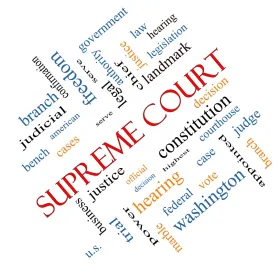On January 31, President Donald Trump selected Judge Neil Gorsuch as his nomination for the United States Supreme Court seat left open by the death of Antonin Scalia nearly a year ago. From an environmental law perspective, it is most notable that Judge Gorsuch has been vocal in calling for the reassessment and potential revocation of Chevron deference to agency interpretation of its own statutes, a doctrine Scalia championed in his early days before exhibiting a degree of flexibility about it later in his tenure on the bench. Because most environmental regulations are promulgated by EPA and DOI pursuant to Congressional authority, opponents of the rulemakings will generally seek to assert that less deference should be afforded by the reviewing courts.
Judge Gorsuch is a graduate of Harvard Law and holds a doctorate degree in legal philosophy from Oxford, where he was a Marshall Scholar. He clerked on the U.S. Supreme Court for Justices Anthony Kennedy and Byron White, and worked for the Department of Justice as well as in private practice. He was appointed to the 10th Circuit Court of Appeals by George W. Bush in 2006. At 49, he would be the youngest Supreme Court justice on the bench.
Judge Gorsuch is the son of Reagan-era U.S. Environmental Protection Agency Administrator Anne Gorsuch Burford, the first woman to head the agency. Burford’s tenure was marked by attempts to curtail the agency’s regulations, and she ultimately resigned amidst allegations that the agency mishandled the $1.6 billion Superfund. Clearly, Gorsuch’s confirmation will be met with substantial scrutiny from Congress – and attention from the environmental community in light of his views on the Chevron doctrine. However, his stellar academic and judicial credentials will likely outweigh such questions.
Like Justice Scalia, Judge Gorsuch is a proponent of originalism and textualism who believes that judicial decisions should be made without regard to real-world outcomes. Unlike Justice Scalia, Judge Gorsuch has been a vocal critic of judicial deference to agency interpretations of regulations.
In Caring Hearts Pers. Home Servs., Inc. v. Burwell (2016), Judge Gorsuch decried the amount of rules and regulations that were able to be issued due to Chevron deference. In a concurrence to his own opinion in Gutierrez-Brizuela v. Lynch (2016), a case involving judicial review of immigration law, Judge Gorsuch described Chevron as “the elephant in the room” that is “more than a little difficult to square with the Constitution.” He indicated that the time may have come to “face the behemoth,” i.e., to revisit Chevron’s deference. Judge Gorsuch’s aversion to Chevron is rather interesting in light of the otherwise striking parallels between his and Justice Scalia’s judicial philosophies as rigid textualists.
Judge Gorsuch’s deregulatory approach would appear to be favorable to business, but since his legal reasoning is divorced from policy and outcomes, he may not have allegiances to any particular types of industry. For example, in a 2015 case of Energy and Environment Legal Institute v. Epel, Judge Gorsuch sided with a renewable energy company in finding no violation of the dormant commerce clause. His commitment to limiting government interference is expected to be generally advantageous to industry, including both fossil fuels and renewables.
In an indication of how Judge Gorsuch plans to reach decisions absent considerations of practical effects, Judge Gorsuch paraphrased Justice Scalia in his acceptance speech, stating, “A judge who likes every outcome he reaches is very likely a bad judge, stretching for results he prefers rather than those the law demands.”





 />i
/>i
